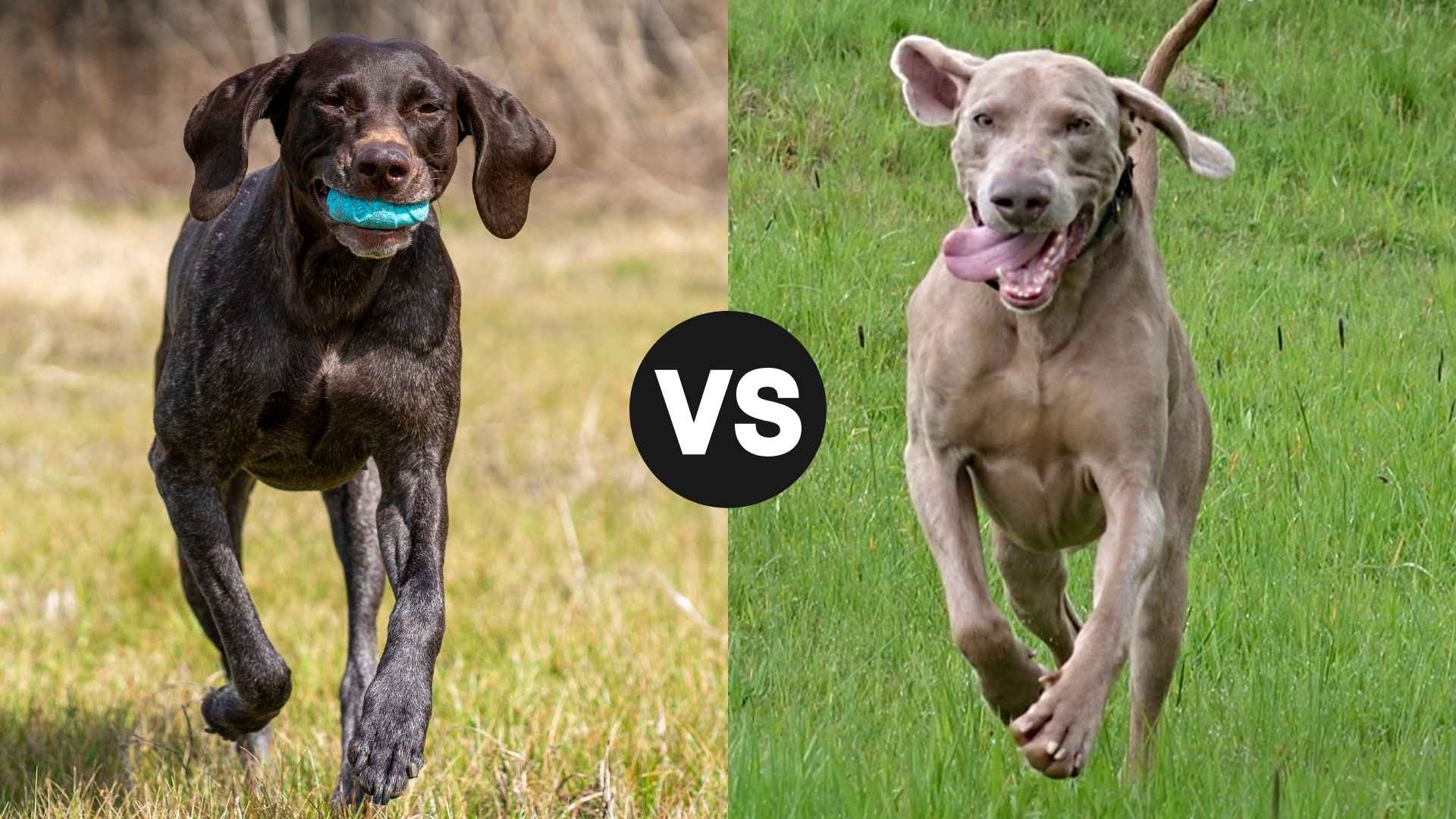If sleek lines, boundless energy, and sharp intelligence are what you’re after in a dog, then chances are you’ve landed on two of the most athletic breeds out there: the German Shorthaired Pointer and the Weimaraner.
These sporting dogs aren’t just beautiful to look at—they’re designed for action and thrive on being your go-to partner for outdoor adventures. But here’s the thing—while both breeds come from similar hunting backgrounds, they have distinct temperaments, training styles, and care needs that can make or break your bond if you choose without doing your homework.
The German Shorthaired Pointer (GSP) is all about versatility, agility, and high-spirited loyalty, while the Weimaraner brings intensity, elegance, and a deep emotional bond to the table.
Whether you’re considering your first sporting dog or simply trying to choose the right fit for your active household, this guide will help you navigate the similarities and differences between these two elegant breeds.
Let’s find out which one fits your pace—and your personality—best.
German Shorthaired Pointer vs. Weimaraner
Distinctive Physical Features
Imagine walking into a doggie fashion show — on one side, strutting with athletic swagger, the German Shorthaired Pointer (GSP). On the other hand, the sleek and silver-coated Weimaraner, practically the James Bond of dogs. Both sporty, both stunning, but their looks? Oh, they tell very different stories.
German Shorthaired Pointer
Height:
Males: 23–25 inches
Females: 21–23 inches
Weight:
45–70 lbs
Build:
Medium-sized, athletic, and well-balanced. Strong and agile with good endurance.
First up, the German Shorthaired Pointer — a hunting dog that seems to have sprinted straight out of an action movie. The German Shorthaired Pointer (GSP) is an intelligent, energetic, and versatile hunting dog breed known for its athletic build and keen hunting instincts.
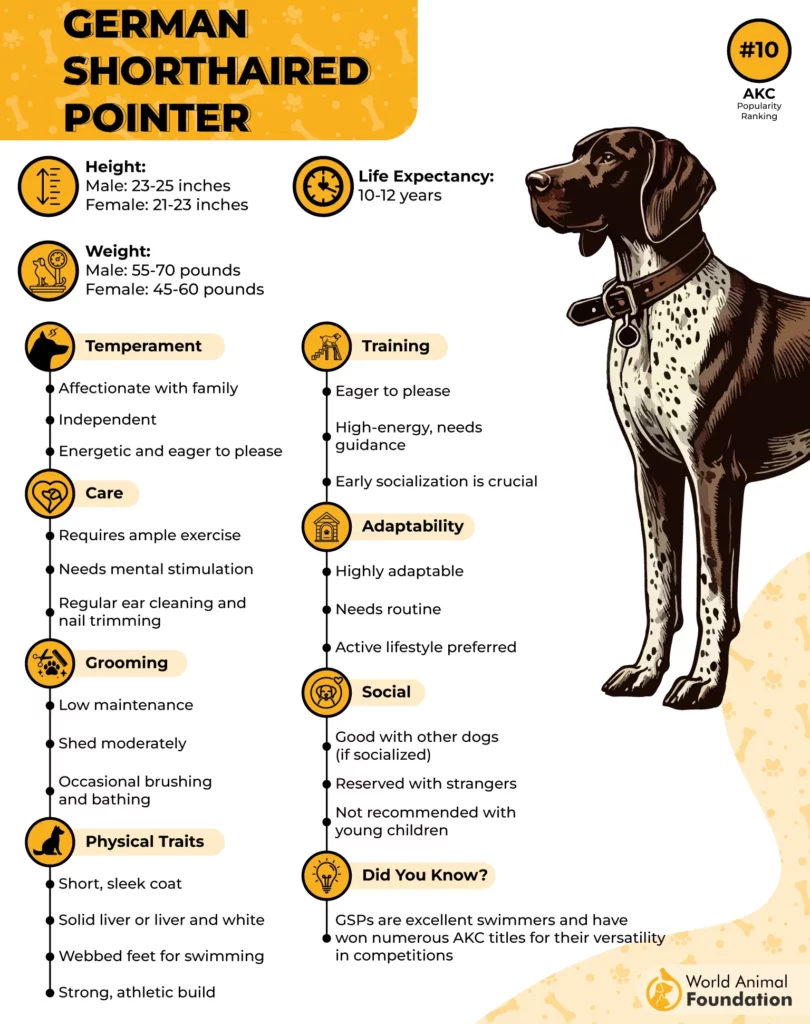
Developed in Germany in the 19th century, this hunting breed is often called “bird dogs” because they are trained to locate and retrieve game birds. Unlike some other bird dogs, GSPs signal by stopping and standing still with their nose directed toward the scent, says PetMD.
With its short, dense coat that’s usually a charming patchwork of liver and white spots, this pup looks like it’s ready for anything.
Need a dog who can swim, run, and charm the socks off your neighbors? That’s your GSP.
Its ears flop just enough to add a touch of goofiness to an otherwise athletic frame.
And those expressive eyes? They say, “I’m serious about hunting, but I’m also down for belly rubs anytime.”
Weimaraner
Height:
Males: 25–27 inches
Females: 23–25 inches
Weight:
55–90 lbs
Build:
Graceful, muscular, and aristocratic in appearance. Slightly longer than tall.
Now, enter the Weimaraner, the sleek silver fox of the canine world. The Weimaraner, known as Germany’s elegant and speedy ‘Gray Ghost,’ is cherished by hunters and pet lovers alike, according to the AKC.
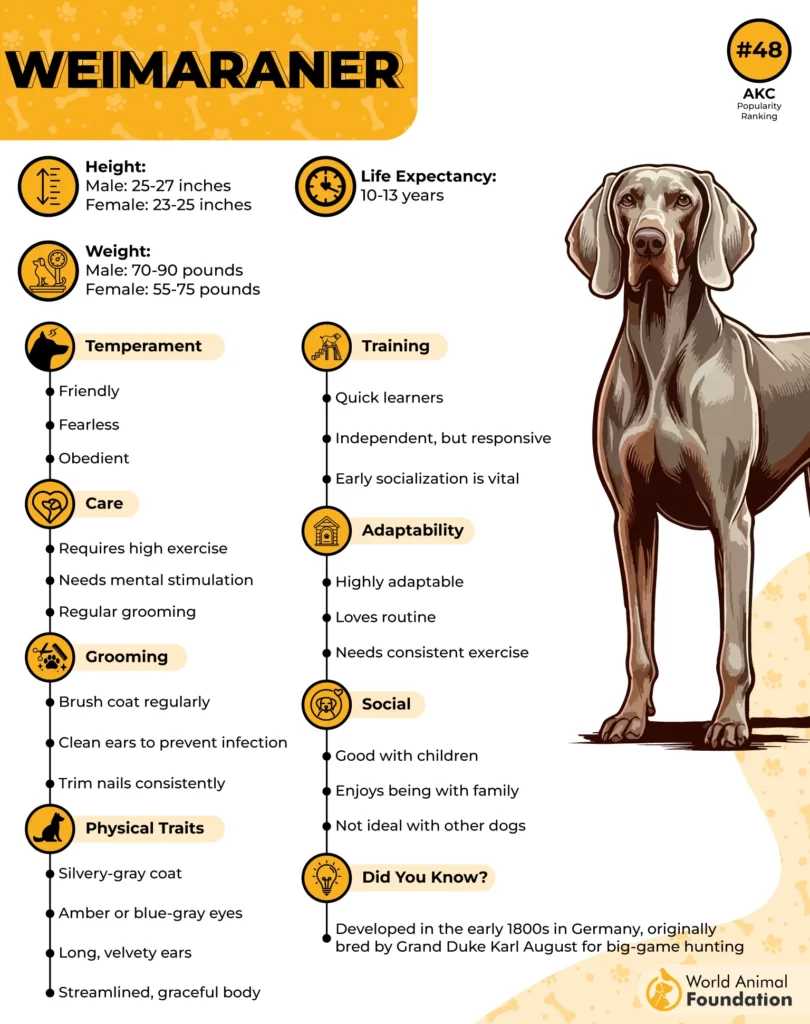
Originally developed in Germany for hunting large game such as deer and boar. This breed is known for its athleticism, intelligence, and strong hunting instincts.
This dog is like the model who just stepped off the runway — tall, lean, and with a short coat so shiny and smooth it could reflect your envy. Their distinctive smoky gray color is unique, making them look like they’ve been dipped in moonlight.
And the eyes — oh, the eyes! Those piercing amber or blue-gray orbs can melt even the toughest heart, or stare you down when you forget the leash. Their ears hang long and gracefully, giving them that aristocratic vibe, as if they expect you to address them as “Sir” or “Lady.”
So, who wins the looks contest? Well, that depends on what you prefer: the GSP’s sporty, patchy charm with a splash of ruggedness, or the Weimaraner’s sleek, silver sophistication with a side of “I’m too cool for this.”
Temperament and Behavioral Traits
German Shorthaired Pointer (GSP)
The German Shorthaired Pointer is the ultimate outdoor enthusiast wrapped in a furry package. Think of them as your adventure coach — always ready to turn a simple walk into a full-on expedition.
These dogs are affectionate and social, genuinely loving to be part of the family hustle and bustle. Their high energy means they thrive on exercise and mental challenges, so they’re perfect for active owners who like to keep moving.
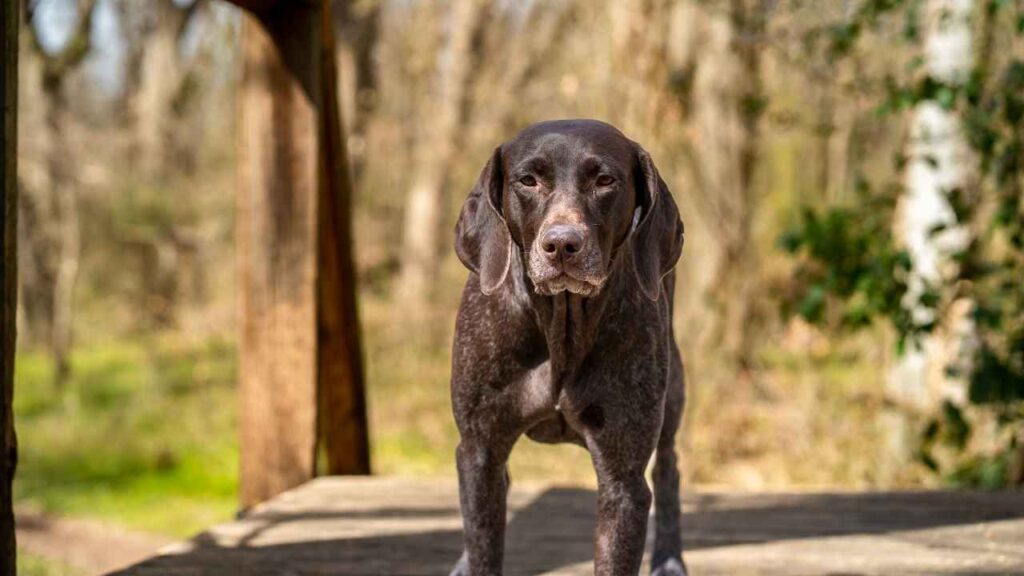
Behavioral Traits:
✅ Exceptionally energetic and loves activities like running, swimming, and hiking
✅ Friendly dogs and outgoing with both people and other pets
✅ Highly intelligent and eager to learn new commands and tricks
✅ Can get mischievous or destructive if bored or left alone for long periods
✅ Affectionate and loyal, always eager to please their humans
Weimaraner
The Weimaraner, often called the “grey ghost,” combines elegance with a flair for the dramatic. These dogs are incredibly loyal and tend to form deep emotional bonds with their owners, often following them around like a devoted shadow.

They’re sensitive souls who crave attention and affection, and they don’t hesitate to let you know when they want it. Training requires patience and consistency, but once you’re on the same page, they become affectionate, playful, and downright charming companions.
Behavioral Traits:
✅ These companion dogs crave constant attention and can suffer from separation anxiety if left alone too long
✅ Extremely loyal and intelligent dogs who appear to be protective toward their family as well.
✅ Sensitive to harsh training methods; responds best to gentle, positive reinforcement
✅ Can be stubborn or independent, requiring consistent and patient training
✅ These family dogs are also known as “velcro dogs” for their tendency to stick close to their owners
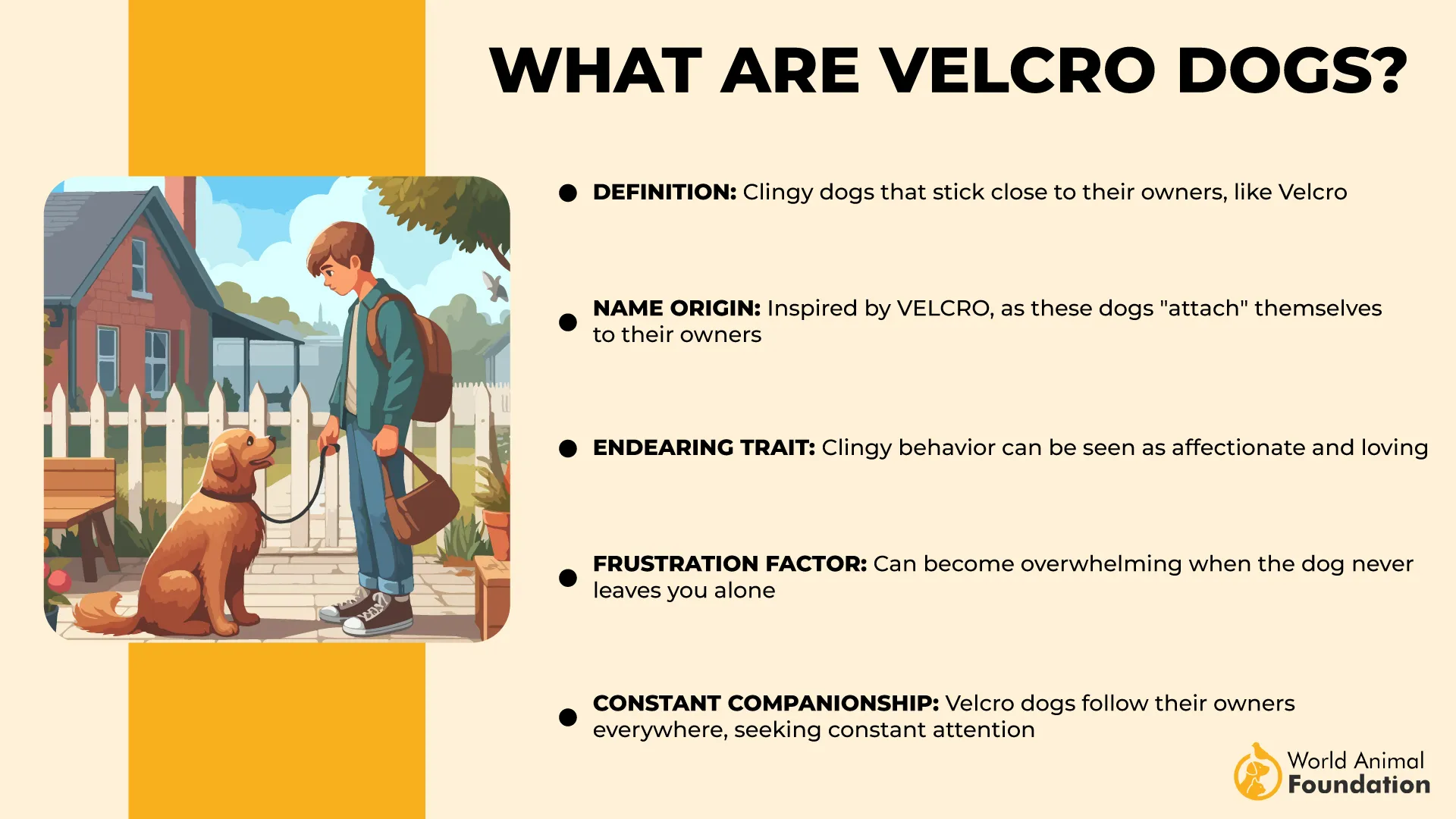
✅ Needs regular mental and physical stimulation to avoid boredom and destructive behavior
Physical Activity Requirements
German Shorthaired Pointer (GSP)
If energy were a currency, the German Shorthaired Pointer would be a billionaire. This breed practically lives to move, sprint, and explore. They’re built for action — whether it’s chasing birds in the field, swimming in a lake, or just tearing around the backyard at lightning speed.
They have high energy levels and thrive in environments where they have plenty of space to run and engage in physical and mental activities. Due to their intelligence and eagerness to please, these hunting dogs excel in obedience training, agility training, and various dog sports.

A typical GSP needs at least 1.5 to 2 hours of vigorous exercise every single day. Without enough physical activity, they can get restless and start inventing their own (usually messy) fun.
Physical Activity Highlights:
Loves high-impact activities like running, swimming, and hiking
Thrives with daily interactive play and training sessions
Needs consistent mental challenges along with physical exercise to stay happy
Ideal for owners who enjoy an active lifestyle and outdoor adventures
Weimaraner
The Weimaraner is like a sleek athlete who’s always on alert, ready to spring into action — but with a slightly more refined style. They need plenty of exercise, too, but their stamina pairs nicely with mental stimulation.
About 1.5 to 2 hours of daily exercise is recommended, including long walks, running, and games that make them think. As per WebMD, Weimaraners have a strong love for running, so don’t be surprised if you end up dashing alongside them at the dog park.
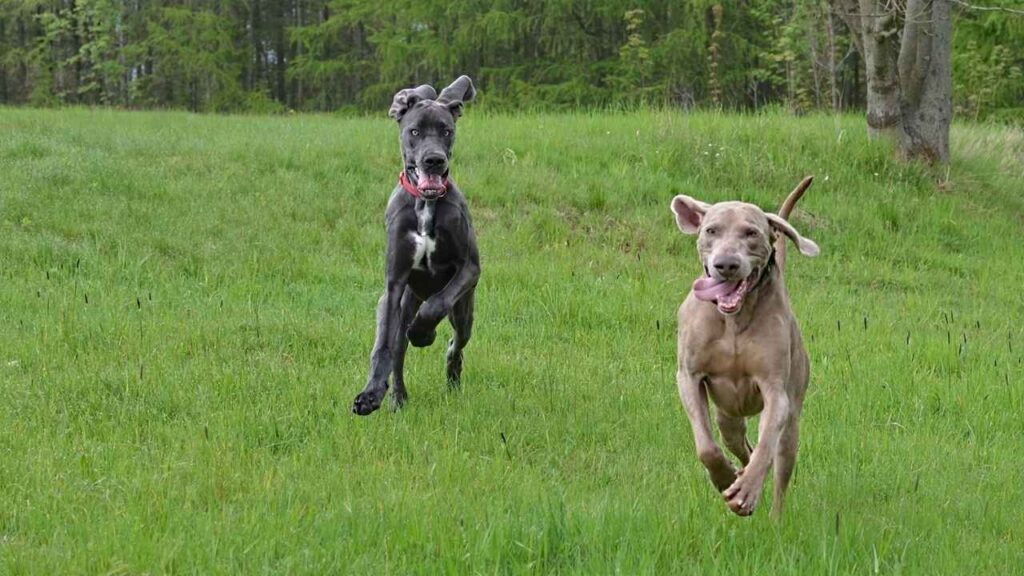
Without enough activity, the Weim can become bored, anxious, or downright naughty (cue the pillow destruction). If you want a dog who’ll match your energy but also snuggle up afterward, the Weimaraner is your go-to.
Physical Activity Highlights:
Requires daily vigorous exercise like running, hiking, or fetch
Benefits greatly from mentally engaging activities and training games
Sensitive dogs who need both a physical outlet and emotional bonding
Prefers a mix of endurance and moderate-intensity activities
Trainability and Intelligence
German Shorthaired Pointer (GSP)
The German Shorthaired Pointer is a superstar student in the doggy classroom. Known for their high intelligence and eagerness to please, GSPs catch on to commands quickly and love learning new tricks. Their natural curiosity and sharp minds make training sessions fun and interactive — if you bring the energy, they’ll bring the smarts.
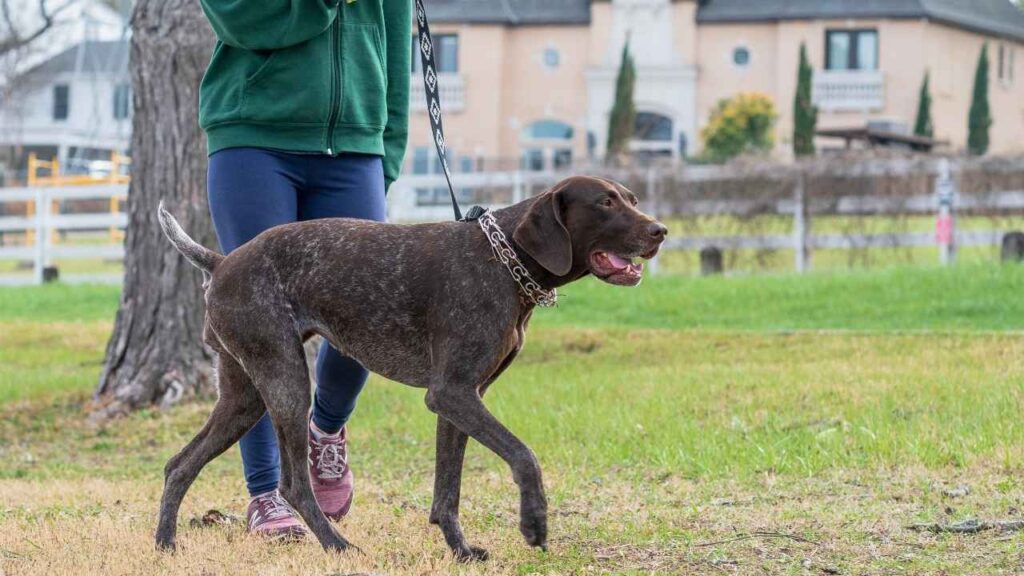
They thrive with positive reinforcement and consistency, making them excellent candidates for obedience, agility, and even hunting training. Just keep in mind, their brains are always on the go, so mental stimulation is just as important as physical exercise to keep them from turning into clever little troublemakers.
Weimaraner
Weimaraners are clever and quick learners, but training them can be a bit like coaching a prima donna — they want to cooperate, but on their terms. These dogs are smart and sensitive, picking up on your tone and emotions, so they respond best to gentle, consistent, and positive methods.

Their independent streak means patience is key, but with the right approach, they excel at obedience, agility, and problem-solving tasks. Mental stimulation keeps them happy and out of trouble, but be ready for a few cheeky moments along the way — after all, they know they’re gorgeous!
Health Considerations and Maintenance
German Shorthaired Pointer (GSP):
GSPs are generally healthy dogs with a lifespan of 10–12 years. However, they can be prone to:
Hip dysplasia
Bloat (gastric torsion) – a life-threatening condition requiring immediate attention
Progressive retinal atrophy (PRA) – an eye condition that can lead to blindness
Von Willebrand’s disease – a blood clotting disorder
Grooming Needs
Regular weekly brushing helps control shedding and keeps the coat healthy and shiny. They tend to shed moderately, especially during seasonal changes, so extra brushing during these times can help manage loose hair. Routine ear cleaning and nail trimming are also important to prevent infections and maintain overall hygiene.
Weimaraner:
Weimaraners also enjoy a lifespan of around 10–13 years, but may face some breed-specific health concerns:
Hip dysplasia
Bloat (gastric torsion) – particularly common in this breed
Hypothyroidism
Entropion – a condition where the eyelid rolls inward
Separation anxiety – can lead to destructive behavior if left alone too often
Grooming Needs:
The Weimaraner requires minimal grooming but benefits from consistent care. Their finer coat is smooth and less prone to heavy shedding compared to the GSP, but it can be more sensitive to skin issues. Weekly brushing with a soft brush helps remove loose hair and promotes healthy skin. Because of their sensitive skin, it’s important to use gentle grooming products and keep an eye out for any irritation.
Choosing the Right Breed for Your Lifestyle
When it comes to picking between a German Shorthaired Pointer and a Weimaraner, the best choice truly depends on your lifestyle and what you want in a furry companion.
If you’re an adventure seeker who lives for the outdoors and can dedicate plenty of time to exercise and play, the German Shorthaired Pointer is your ideal partner. Their friendly, adaptable nature and high energy make them great dogs who thrive when they have a job to do or a trail to explore.

On the flip side, if you’re looking for a sleek, sensitive, and deeply loyal dog that loves being your shadow and soaking up your attention, the Weimaraner might be a better fit. They need just as much exercise, but also crave close emotional bonds and may require a bit more patience and gentle guidance in training.
By understanding their unique temperaments, energy levels, and needs, you can choose the breed that complements your daily routine and personality, setting you both up for a happy, lasting friendship.
Conclusion
Choosing between the German Shorthaired Pointer vs. the Weimaraner involves understanding the visual differences, personalities, and needs of these two elegant-looking dogs. Both are high-energy hunting dogs and working breeds, bred for endurance, intelligence, and versatility in field trials and canine sports like dock diving and other activities. With a strong prey drive and a love for adventure, they thrive in homes with a secure yard and plenty of mental stimulation.
The German Shorthaired Pointer is slightly more moderate family family-friendly, and known to be better with small animals and small dogs when given early socialization. Weimaraners, while affectionate and loyal, may be more prone to barking and anxiety if left alone for extended periods.
Whether you’re choosing your new dog from a reputable breeder or seeking out field champions, it’s important to make an informed decision based on your lifestyle. With proper care and training, both breeds can make pet-friendly, energetic additions to active families looking for more than just a companion. To skip ahead to happiness, make sure you’re ready to keep these dogs happy and fulfilled.


